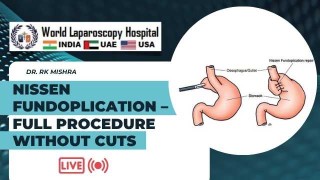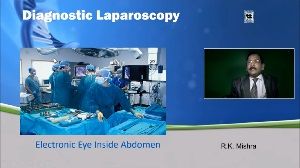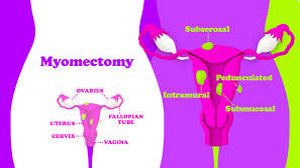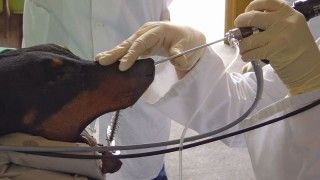Surgical Procedure for Left Ovarian Cyst Removal: Ovarian Cystectomy Explained
Add to
Share
2,229 views
Report
2 years ago
Description
Ovarian cystectomy is a surgical procedure that involves the removal of an ovarian cyst. This procedure is commonly performed to treat ovarian cysts that are causing pain, discomfort, or other symptoms. In this particular case, the surgery is being performed specifically for a left ovarian cyst. During the procedure, the surgeon will make an incision in the abdomen to access the ovary. The cyst is then carefully removed from the ovary while preserving the healthy tissue. After the cyst has been removed, the ovary is carefully examined to ensure that no other cysts or abnormalities are present. The incision is then closed, and the patient is monitored closely during recovery. Ovarian cystectomy is typically performed using minimally invasive techniques, such as laparoscopy, which can result in less pain, scarring, and a shorter recovery time compared to traditional open surgery. If you are experiencing symptoms of an ovarian cyst, it is important to speak with your healthcare provider to determine the most appropriate course of treatment, which may include ovarian cystectomy or other options. Ovarian cystectomy is a surgical procedure that involves the removal of a cyst from the ovary. Left ovarian cystectomy is specifically used to remove cysts that develop on the left ovary. This procedure is typically recommended when a cyst is large or has the potential to become cancerous, or if it causes persistent pain or discomfort. During a left ovarian cystectomy, the surgeon makes a small incision in the abdomen and locates the left ovary. The cyst is then carefully removed from the ovary, and the ovary is preserved as much as possible. The incision is then closed, and the patient is monitored for any postoperative complications. While this surgery is generally considered safe and effective, there are potential risks associated with any surgical procedure, including bleeding, infection, and damage to surrounding organs or tissue. It is important for patients to discuss the risks and benefits of left ovarian cystectomy with their doctor, and to carefully consider their options before proceeding with surgery. If you are experiencing symptoms of an ovarian cyst or have been diagnosed with a left ovarian cyst, it is important to consult with a qualified healthcare provider who can provide a thorough evaluation and help determine the best course of treatment for your individual needs. Ovarian cystectomy is a surgical procedure that involves the removal of an ovarian cyst, a fluid-filled sac that develops in the ovary. This procedure is typically performed to address cysts that are causing discomfort or pain, interfering with fertility, or are suspected of being cancerous. In the case of a left ovarian cyst, the cystectomy would involve removing the cyst from the left ovary. During the procedure, the patient is placed under general anesthesia. The surgeon makes an incision in the lower abdomen and then carefully removes the cyst from the ovary. Depending on the size and nature of the cyst, the surgeon may choose to remove only the cyst or the entire ovary. After the cyst has been removed, the incision is closed with sutures or staples. The patient is then monitored for several hours to ensure that there are no complications from the surgery. Recovery time can vary, but patients can typically return to their normal activities within a few days to a week after the procedure. It is important for patients to discuss the risks and benefits of ovarian cystectomy with their doctor before undergoing the procedure. Possible complications can include infection, bleeding, and damage to surrounding organs or tissues. Additionally, removal of the entire ovary may have implications for fertility and hormonal balance, and patients should discuss these concerns with their doctor as well. Overall, ovarian cystectomy is a common and effective surgical procedure for addressing ovarian cysts. With proper care and monitoring, patients can typically recover well and return to their normal activities.
Similar Videos






